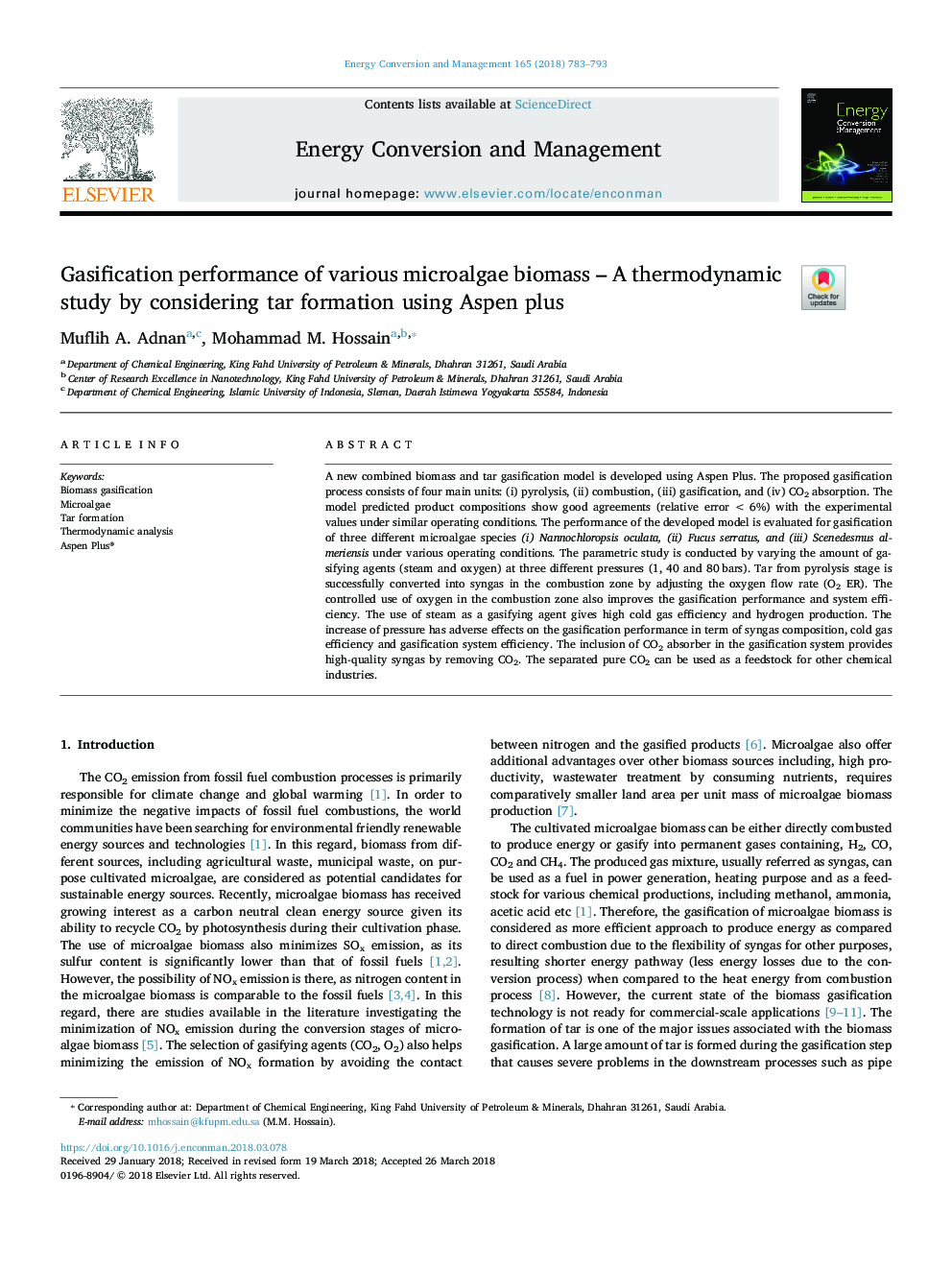| Article ID | Journal | Published Year | Pages | File Type |
|---|---|---|---|---|
| 7158575 | Energy Conversion and Management | 2018 | 11 Pages |
Abstract
A new combined biomass and tar gasification model is developed using Aspen Plus. The proposed gasification process consists of four main units: (i) pyrolysis, (ii) combustion, (iii) gasification, and (iv) CO2 absorption. The model predicted product compositions show good agreements (relative errorâ¯<â¯6%) with the experimental values under similar operating conditions. The performance of the developed model is evaluated for gasification of three different microalgae species (i) Nannochloropsis oculata, (ii) Fucus serratus, and (iii) Scenedesmus almeriensis under various operating conditions. The parametric study is conducted by varying the amount of gasifying agents (steam and oxygen) at three different pressures (1, 40 and 80â¯bars). Tar from pyrolysis stage is successfully converted into syngas in the combustion zone by adjusting the oxygen flow rate (O2 ER). The controlled use of oxygen in the combustion zone also improves the gasification performance and system efficiency. The use of steam as a gasifying agent gives high cold gas efficiency and hydrogen production. The increase of pressure has adverse effects on the gasification performance in term of syngas composition, cold gas efficiency and gasification system efficiency. The inclusion of CO2 absorber in the gasification system provides high-quality syngas by removing CO2. The separated pure CO2 can be used as a feedstock for other chemical industries.
Related Topics
Physical Sciences and Engineering
Energy
Energy (General)
Authors
Muflih A. Adnan, Mohammad M. Hossain,
